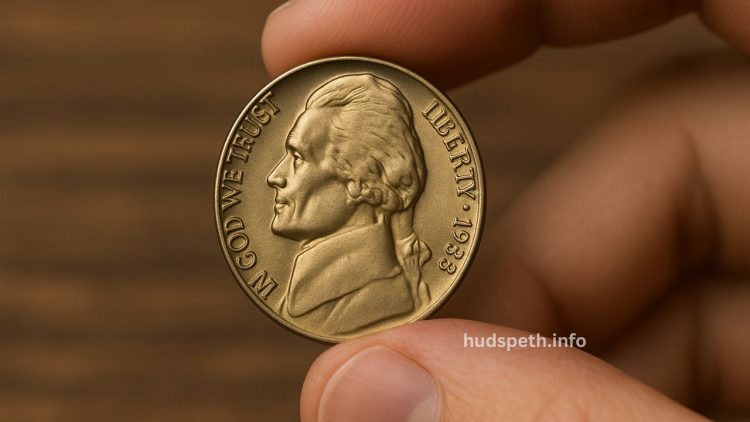In an extraordinary turn of events, a 1938 Jefferson Nickel discovered in a rusty tin box has been appraised at over $25,000.
This remarkable find underscores the hidden treasures that can exist in the most unassuming places and highlights the significant value that certain coins can attain due to rarity, condition, and historical significance.
The Discovery
The coin was unearthed during a routine cleaning of an old garage in Ohio. Inside a forgotten tin box, amidst assorted nails and screws, lay a seemingly ordinary nickel.
Upon closer inspection, the coin revealed itself to be a 1938 Jefferson Nickel, the inaugural year of this coin series. Its exceptional preservation and unique characteristics prompted further evaluation by numismatic experts.
Factors Contributing to High Value
Several key factors contribute to the substantial valuation of this coin:
1. First-Year Issue
The 1938 Jefferson Nickel marks the first year of the Jefferson nickel series, replacing the Buffalo nickel. First-year issues are often highly sought after by collectors due to their historical significance.
2. Low Mintage Figures
In 1938, the U.S. Mint produced the Jefferson Nickel at three locations:
| Mint Location | Mint Mark | Mintage Quantity |
|---|---|---|
| Philadelphia | None | 19,496,000 |
| Denver | D | 5,376,000 |
| San Francisco | S | 4,105,000 |
The Denver (D) and San Francisco (S) mintages are notably lower, increasing their rarity and desirability among collectors.
3. Exceptional Condition
The coin’s preservation is extraordinary, showing minimal signs of wear. Coins in such pristine condition are rare, especially from this era, and are graded highly on the Sheldon scale, which ranges from 1 to 70.
4. Full Steps Designation
A significant attribute of this coin is the Full Steps designation. This term refers to the clarity and completeness of the steps on Monticello, depicted on the coin’s reverse. Coins with this feature are scarce and command higher prices.
Valuation Details
The combination of the coin’s first-year status, low mintage, exceptional condition, and Full Steps designation culminates in its high valuation. Recent auctions have seen similar coins fetch impressive sums:
| Coin Type | Grade | Auction Price |
|---|---|---|
| 1938-D Jefferson Nickel (FS) | MS68+ | $33,600 |
| 1938-S Jefferson Nickel (FS) | MS67 | $2,000 |
| 1938 Jefferson Nickel (No MM) | MS67 | $3,562 |
Note: “FS” denotes Full Steps; “MS” stands for Mint State; “MM” refers to Mint Mark.
This remarkable discovery of a 1938 Jefferson Nickel in a rusty tin box serves as a testament to the hidden treasures that may reside unnoticed in everyday places.
For collectors and enthusiasts, it emphasizes the importance of understanding the factors that contribute to a coin’s value: mintage numbers, condition, unique features like the Full Steps designation, and historical context.
As this find illustrates, even a humble nickel can hold extraordinary worth.
FAQs
What makes the 1938 Jefferson Nickel so valuable?
Its value stems from being the first year of issue, low mintage numbers (especially from Denver and San Francisco), exceptional preservation, and the rare Full Steps designation on the reverse.
How can I determine if my Jefferson Nickel has the Full Steps designation?
Examine the steps on Monticello on the coin’s reverse. If all five or six steps are clearly visible and unbroken, it may qualify for the Full Steps designation. Professional grading services can provide an official assessment.
Where can I get my coin appraised?
Reputable coin dealers, numismatic associations, or professional grading services like PCGS or NGC can provide appraisals and authenticate your coin’s value.

